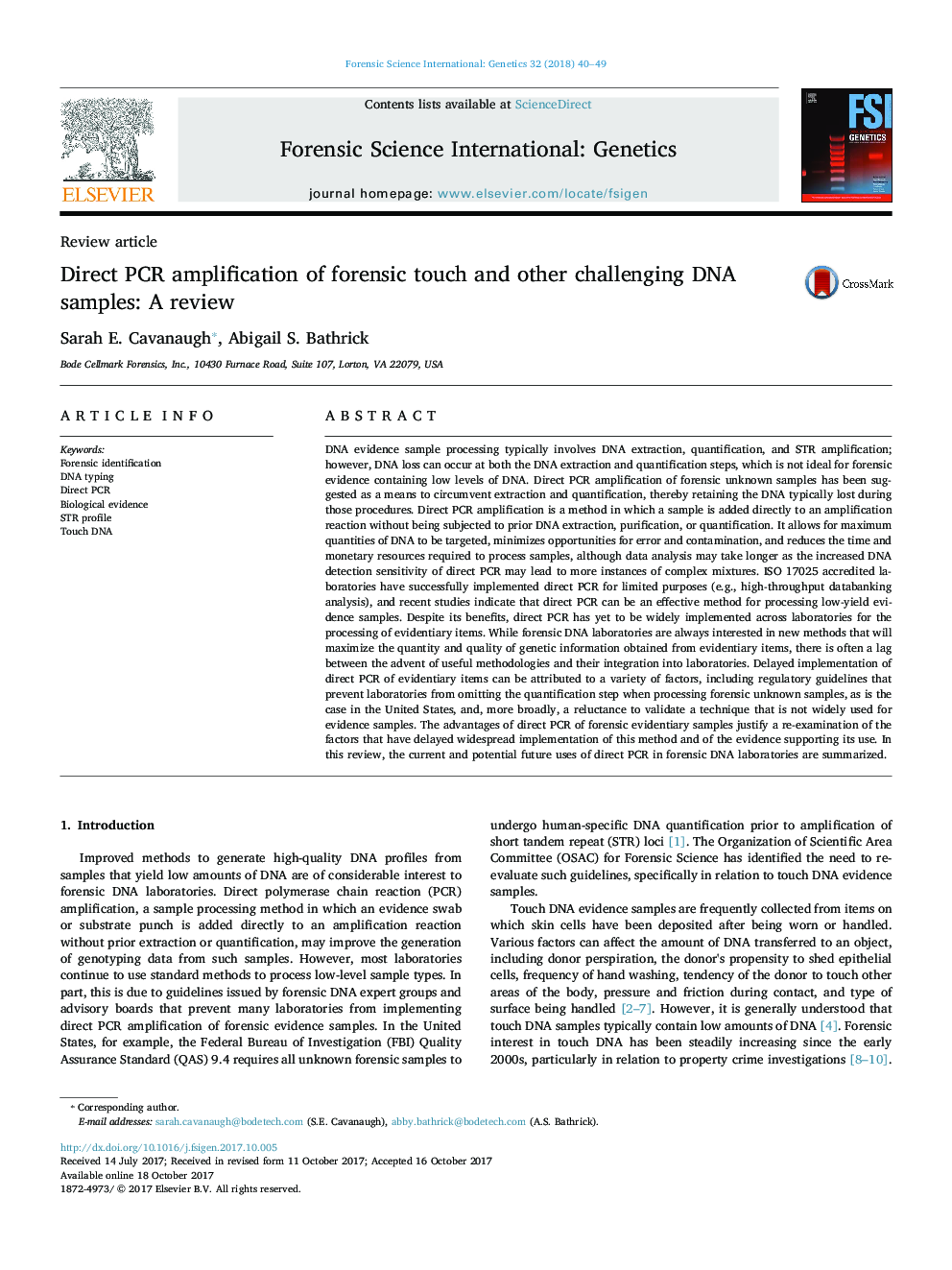| کد مقاله | کد نشریه | سال انتشار | مقاله انگلیسی | نسخه تمام متن |
|---|---|---|---|---|
| 6462665 | 1422146 | 2018 | 10 صفحه PDF | دانلود رایگان |
• Direct PCR allows evidence samples to bypass DNA extraction and quantification.
• Many studies have demonstrated the method’s effectiveness for low-yield samples.
• Sample categories optimal for direct PCR are suggested to allow for sample triage.
• Implementation necessitates a re-evaluation of guidelines requiring quantification.
DNA evidence sample processing typically involves DNA extraction, quantification, and STR amplification; however, DNA loss can occur at both the DNA extraction and quantification steps, which is not ideal for forensic evidence containing low levels of DNA. Direct PCR amplification of forensic unknown samples has been suggested as a means to circumvent extraction and quantification, thereby retaining the DNA typically lost during those procedures. Direct PCR amplification is a method in which a sample is added directly to an amplification reaction without being subjected to prior DNA extraction, purification, or quantification. It allows for maximum quantities of DNA to be targeted, minimizes opportunities for error and contamination, and reduces the time and monetary resources required to process samples, although data analysis may take longer as the increased DNA detection sensitivity of direct PCR may lead to more instances of complex mixtures. ISO 17025 accredited laboratories have successfully implemented direct PCR for limited purposes (e.g., high-throughput databanking analysis), and recent studies indicate that direct PCR can be an effective method for processing low-yield evidence samples. Despite its benefits, direct PCR has yet to be widely implemented across laboratories for the processing of evidentiary items. While forensic DNA laboratories are always interested in new methods that will maximize the quantity and quality of genetic information obtained from evidentiary items, there is often a lag between the advent of useful methodologies and their integration into laboratories. Delayed implementation of direct PCR of evidentiary items can be attributed to a variety of factors, including regulatory guidelines that prevent laboratories from omitting the quantification step when processing forensic unknown samples, as is the case in the United States, and, more broadly, a reluctance to validate a technique that is not widely used for evidence samples. The advantages of direct PCR of forensic evidentiary samples justify a re-examination of the factors that have delayed widespread implementation of this method and of the evidence supporting its use. In this review, the current and potential future uses of direct PCR in forensic DNA laboratories are summarized.
Journal: Forensic Science International: Genetics - Volume 32, January 2018, Pages 40–49
